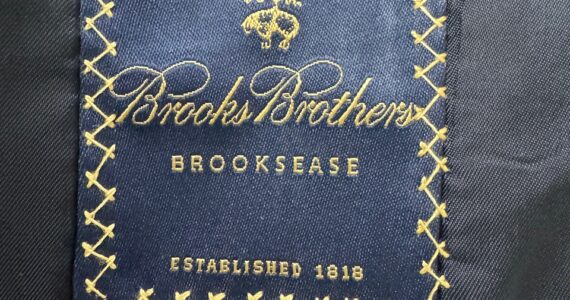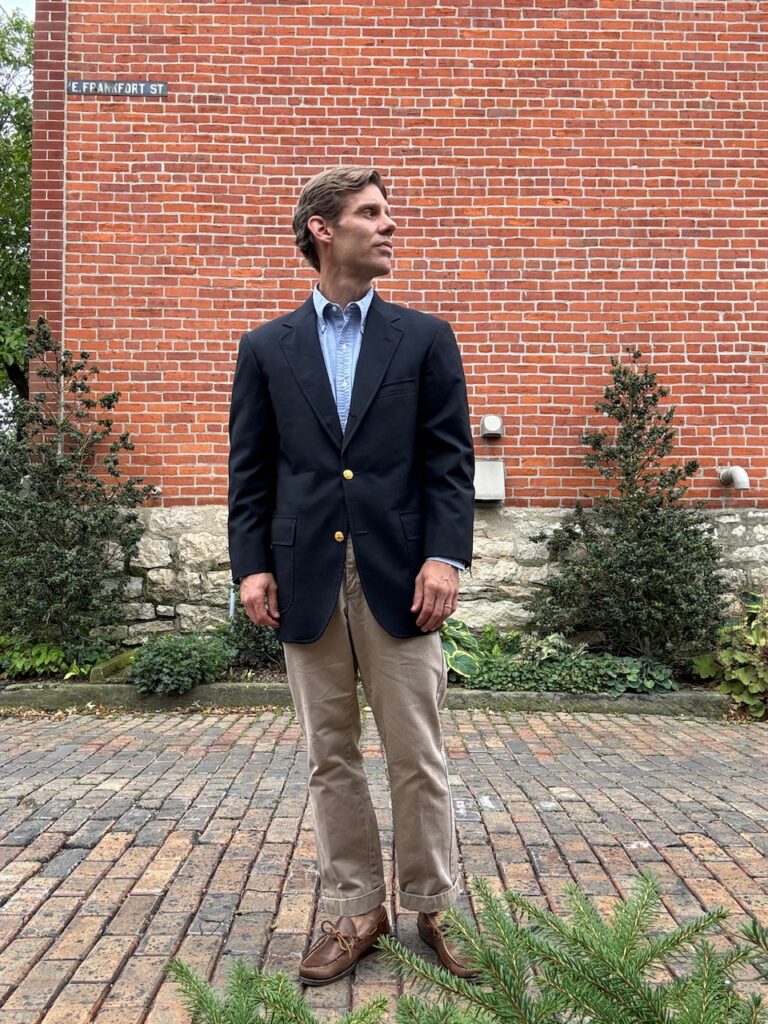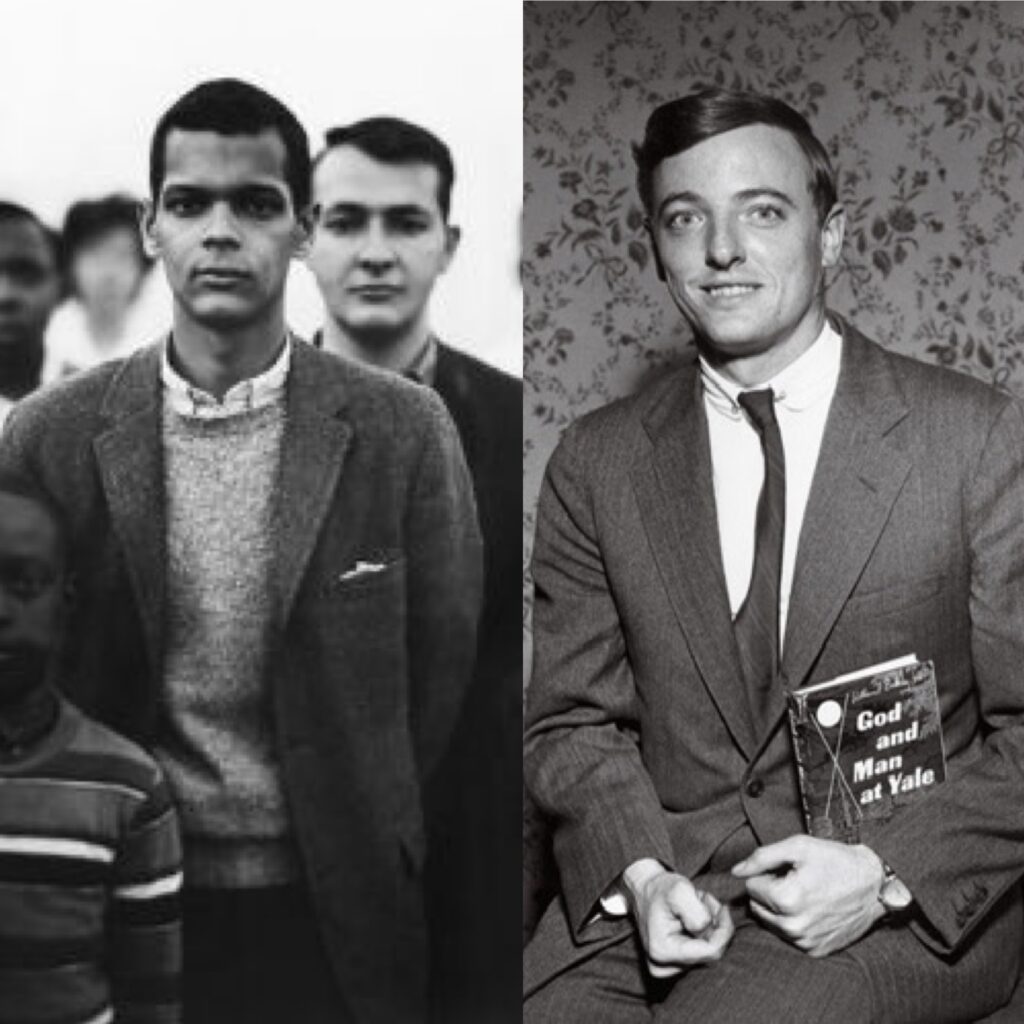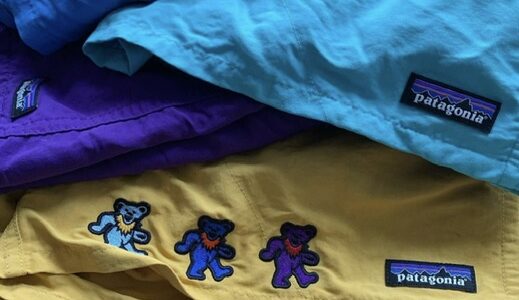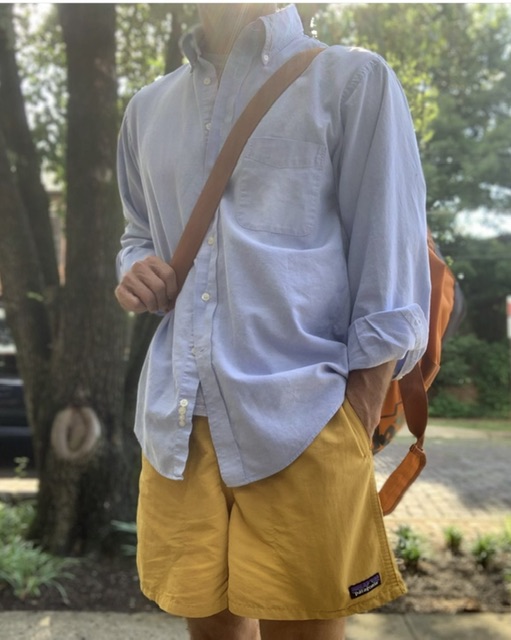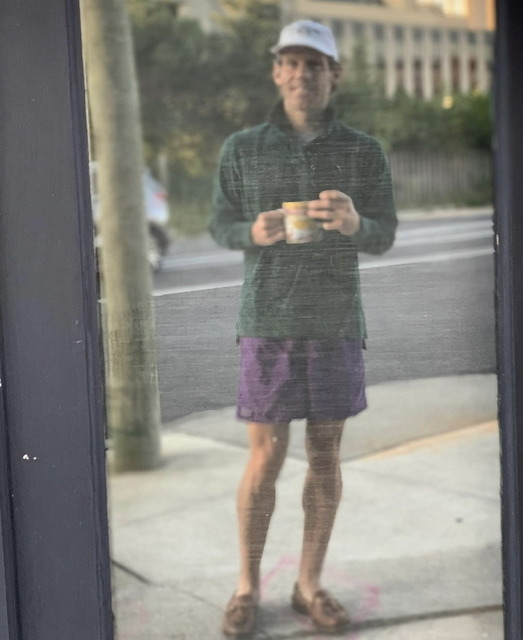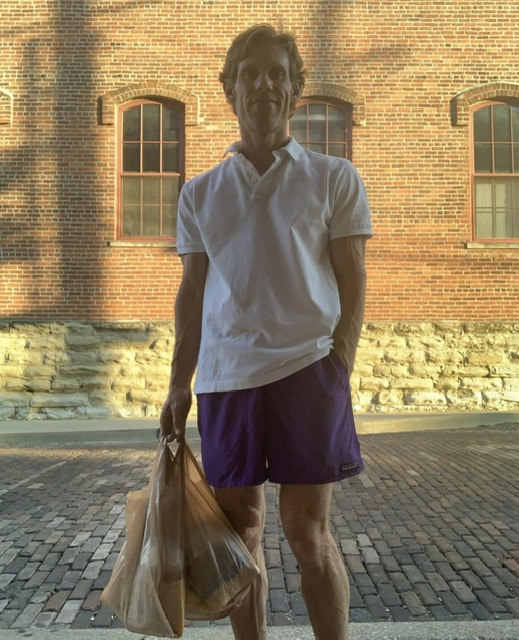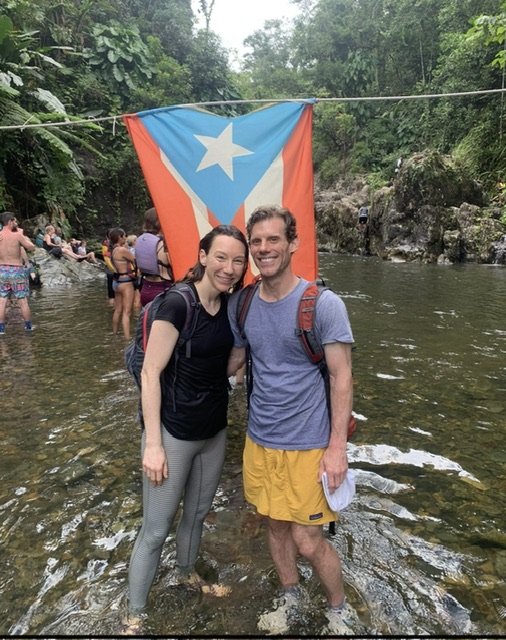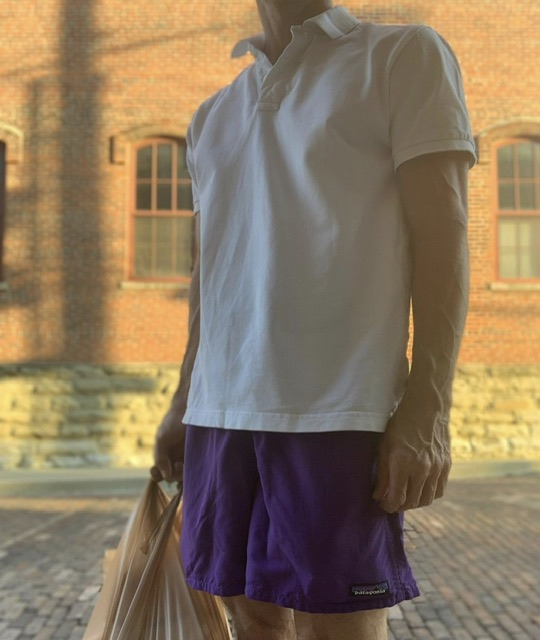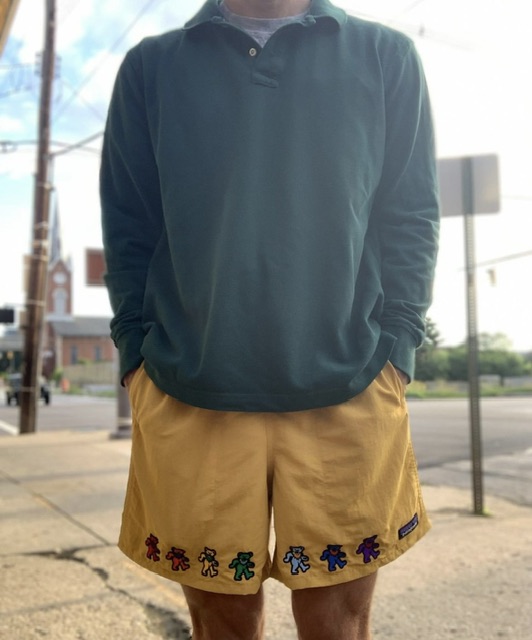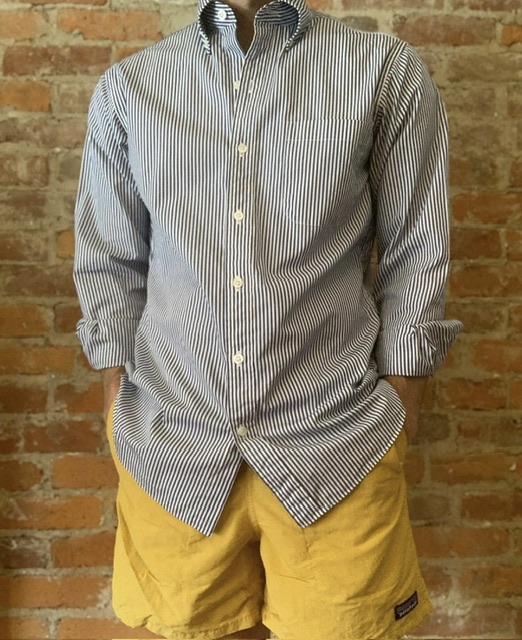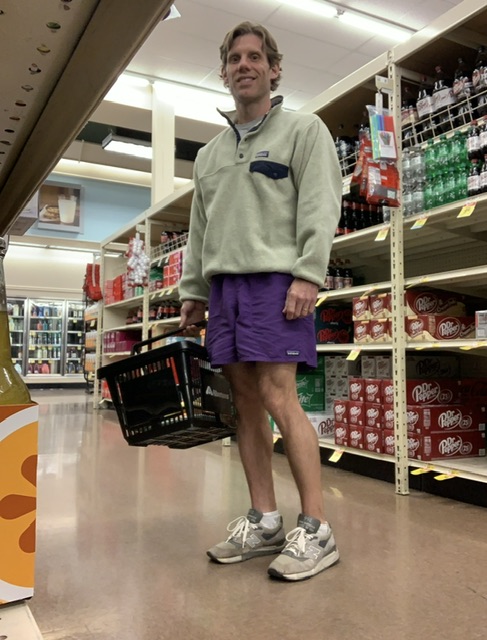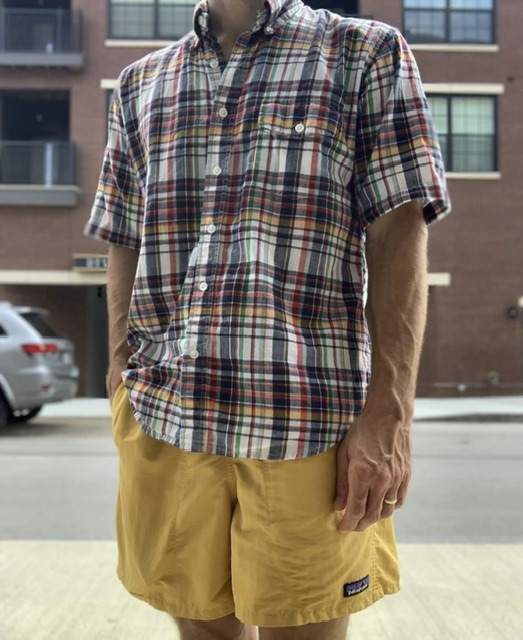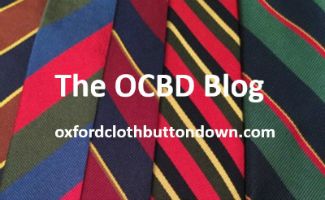Every once and a while you stumble upon a piece of clothing that defies all logic and lasts forever. Not only does it refuse to die, but you end up loving it. You also end up wishing that you had bought more, but you could have never known that. No one could have. I have a handful of items that fit the bill. This post is about one of them.
This polo shirt is not supposed to still be here. It was supposed to have been donated or cut into rags at this point, but it has no plans on giving up the ghost anytime soon. It’s not even especially well made. I mean, I grabbed it from Target (Merona brand) on a whim 10 plus years ago. It’s at least 8 years old because I have included a pic of me wearing it in 2016 (first pic below). It was a nice color of navy. Not too dark (I see this all too often) and not too bright. Not only did it have a Goldilocks color it had a Goldilocks fit too. Just the perfect amount to baggy. I don’t recall the price, but I know it was cheap.
I love this polo. I wear it all of the time. I wear it out to lunch, to the pool/beach, for golf, and even on the occasional bike ride which is what I was doing in the yellow baggies pic below. In short, I abuse it. It doesn’t care. It is starting to show a little wear, but it still has some life left in it. There is no moral to this story. It’s just about getting lucky, how some clothing items beat the odds, and appreciating that when it happens. You ever had this happen? I’d love to hear about it.








